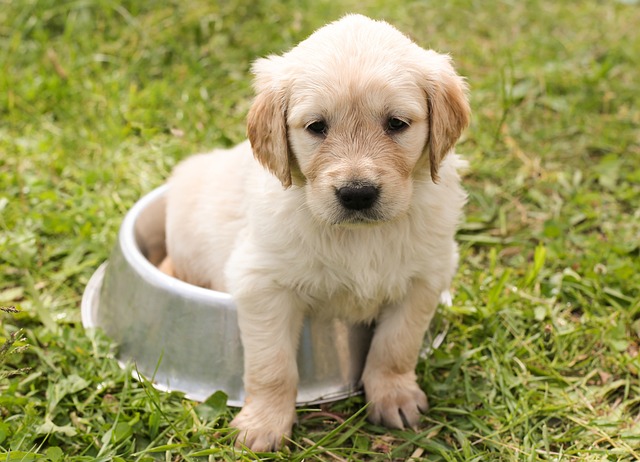If you suspect that your dog might be pregnant, you might be wondering how to confirm it and what to expect. Dog pregnancy is not very different from human pregnancy, except that it lasts only about two months and has some unique signs and symptoms. In this article, we will explain how to tell if your dog is pregnant at home, what are the common signs and symptoms of dog pregnancy, and how to care for your pregnant dog and her puppies.
How to Tell If Your Dog Is Pregnant at Home
There are several ways to tell if your dog is pregnant at home, without visiting a vet. However, these methods are not 100% accurate and may not detect pregnancy in the early stages. Therefore, it is always advisable to consult a vet if you want to confirm your dog’s pregnancy and monitor her health and the development of the puppies.
Some of the methods to tell if your dog is pregnant at home are:
- Physical examination
You can gently palpate your dog’s abdomen to feel for any lumps or bumps that might indicate the presence of puppies. However, this should be done very carefully and only after the third week of pregnancy, as you might harm the puppies or cause a miscarriage. You can also look for changes in your dog’s nipples, such as enlargement, discoloration, or discharge. These changes usually occur around the second or third week of pregnancy and are known as “pinking up”.
- Weight gain
You can weigh your dog regularly to check for any weight gain that might indicate pregnancy. A pregnant dog will start to gain weight around her stomach and waist before her pregnancy starts to show. The amount of weight gain depends on the size and breed of your dog, as well as the number of puppies she is carrying. On average, a pregnant dog will gain about 15-25% of her normal body weight by the end of pregnancy.
- Swollen belly
You can observe your dog’s belly for any swelling or roundness that might indicate pregnancy. A pregnant dog’s belly will start to swell around the fourth or fifth week of pregnancy and will become more noticeable as pregnancy progresses. However, a swollen belly can also be caused by other conditions, such as worms, bloating, or tumors, so it is not a definitive sign of pregnancy.
- Increase in appetite
You can monitor your dog’s appetite for any changes that might indicate pregnancy. A pregnant dog may have an increased appetite, especially in the later stages of pregnancy, as she needs more calories and nutrients to support the growth of the puppies. However, some dogs may also experience a decrease in appetite or changes in food preferences, especially in the early stages of pregnancy, due to hormonal changes or morning sickness.
- Tires easily
You can observe your dog’s energy level for any changes that might indicate pregnancy. A pregnant dog may have less energy, appear tired, and lie down for long stretches of time. She may also show general discomfort, restlessness, or less obedience. These changes are due to the physical and hormonal changes that occur during pregnancy, as well as the increased weight and pressure on her organs.
- More affectionate or irritable
You can observe your dog’s mood and behavior for any changes that might indicate pregnancy. A pregnant dog may become more affectionate, clingy, or protective, seeking more attention and comfort from you. She may also become more irritable, aggressive, or anxious, showing signs of stress or discomfort. These changes are due to hormonal fluctuations and maternal instincts that occur during pregnancy.
- Nesting behavior
You can observe your dog’s nesting behavior for any changes that might indicate pregnancy. A pregnant dog may start to show nesting behavior, such as collecting and arranging bedding, toys, or other items in a secluded and comfortable spot. She may also dig, scratch, or chew on these items, or on the floor or furniture. This behavior usually occurs in the last week or two of pregnancy and is a sign that she is preparing for the delivery of puppies.
Signs and Symptoms of Dog Pregnancy
Symptoms of dog pregnancy are similar to those of human pregnancy, but they may vary depending on the breed, size, and number of puppies. Some of the common signs and symptoms of dog pregnancy are:
- Morning sickness
Some dogs may experience nausea, vomiting, or loss of appetite in the first few weeks of pregnancy, due to hormonal changes or stress. This usually subsides by the fourth week of pregnancy, but it may persist in some cases. You can help your dog by offering her small and frequent meals, avoiding spicy or fatty foods, and providing fresh water at all times.
- Vaginal discharge
Some dogs may have a clear or bloody vaginal discharge during pregnancy, especially in the later stages. This is normal and indicates that the cervix is preparing for delivery. However, if the discharge is foul-smelling, green, yellow, or thick, it may indicate an infection or a complication, and you should contact your vet immediately.
- Milk production
Some dogs may start producing milk in their mammary glands before delivery, as early as the fifth week of pregnancy. This is normal and indicates that the body is preparing for lactation. However, if the milk is bloody, pus-filled, or has a bad odor, it may indicate an infection or a complication, and you should contact your vet immediately.
- Contractions
Some dogs may start to have contractions in their uterus before delivery, as early as the eighth week of pregnancy. This is normal and indicates that the body is preparing for labor. However, if the contractions are frequent, intense, or last for more than an hour, it may indicate a problem, such as premature labor, dystocia, or uterine rupture. You should contact your vet immediately.
Conclusion
You should provide your pregnant dog with a clean, comfortable, and quiet environment that meets her needs and preferences. You should avoid exposing her to loud noises, bright lights, or stressful situations, as this may affect her mood and behavior. Avoid moving her to a new or unfamiliar place, as this may cause anxiety or confusion. You should prepare a whelping area for her, where she can give birth and nurse her puppies. Ideally, the whelping area should be spacious, warm, dry, and well-ventilated, and should have soft and clean bedding. You should also provide her with some toys, water, and food nearby, as well as a box or crate where she can hide or rest.




